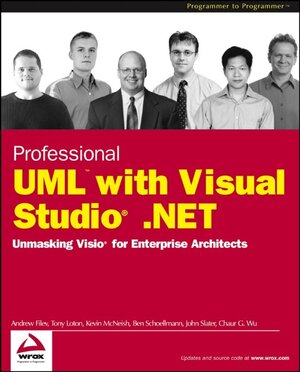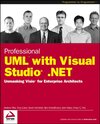
×
![Buchcover ISBN 9780764558757]()
What is this book about?
If you want to use Visio to create enterprise software, this isthe book for you.
The integration of Visual Studio . NET Enterprise Architect andVisio for Enterprise Architects provides a formidable tool. Visiooffers powerful diagramming capabilities, including such things ascreating UML models, mapping out databases with Entity Relationshipdiagrams, and aiding the development of distributed systems. Itsintegration with Visual Studio . NET Enterprise Architect means thatC# or Visual Basic . NET code can be generated from the UMLdiagrams, and Visual Studio . NET projects can be reverse engineeredto UML models.
For the developer already familiar with UML and looking to getthe best out of Visio, the Visual Studio . NET and Visio forEnterprise Architects combination is weakly documented, and thequality information needed to realize the time-saving features ofVisio just does not seem to be available, until now.
This book presumes that you are already familiar with the basicconcepts of UML notation -- this book will not teachyou UML. Instead, this book will take you forward into the Visioenvironment, showing you how to make the most of its softwarerelated features.
What does this book cover?
In this book, you'll learn how to
* Diagram business components in Visio
* Generate code from a UML model
* Reverse engineer Visual Studio . NET projects into a UMLmodel
* Reverse engineer into a UML model without source code
* Document the project with UML and Visio
* Design distributed applications with Visio's diagrams
* Work with Entity Relationship database modeling, and round-tripengineering for database design
If you want to use Visio to create enterprise software, this isthe book for you.
The integration of Visual Studio . NET Enterprise Architect andVisio for Enterprise Architects provides a formidable tool. Visiooffers powerful diagramming capabilities, including such things ascreating UML models, mapping out databases with Entity Relationshipdiagrams, and aiding the development of distributed systems. Itsintegration with Visual Studio . NET Enterprise Architect means thatC# or Visual Basic . NET code can be generated from the UMLdiagrams, and Visual Studio . NET projects can be reverse engineeredto UML models.
For the developer already familiar with UML and looking to getthe best out of Visio, the Visual Studio . NET and Visio forEnterprise Architects combination is weakly documented, and thequality information needed to realize the time-saving features ofVisio just does not seem to be available, until now.
This book presumes that you are already familiar with the basicconcepts of UML notation -- this book will not teachyou UML. Instead, this book will take you forward into the Visioenvironment, showing you how to make the most of its softwarerelated features.
What does this book cover?
In this book, you'll learn how to
* Diagram business components in Visio
* Generate code from a UML model
* Reverse engineer Visual Studio . NET projects into a UMLmodel
* Reverse engineer into a UML model without source code
* Document the project with UML and Visio
* Design distributed applications with Visio's diagrams
* Work with Entity Relationship database modeling, and round-tripengineering for database design



